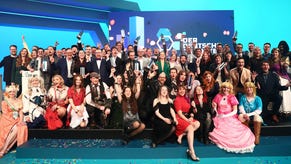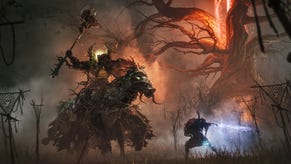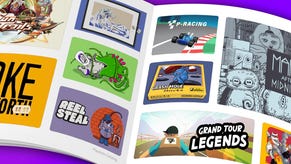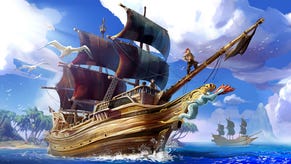Great British Design Quest
What is the public’s favourite example of great British design?
What is the best loved example of British design? Concorde? The Spitfire? The London Underground Map? The Design Museum and BBC Two's The Culture Show are asking the public to choose their favourite British design since 1900 in the Great British Design Quest. The long list of 25 designs nominated for the Quest will be unveiled tonight (Thursday 26 January) on The Culture Show.
Design is a field where Britain excels. Many of the world's leading designers live and work here, and their innovations have changed the lives of millions of people all over the world. Britain has a wonderful design heritage, and we want to discover which of the many great British designs - from cars and computer games, to the Catseye - the nation loves the most.
Votes can be cast on the Quest website at www.bbc.co.uk/designquest. The Culture Show will announce the ten most popular designs on Thursday 16 February. People will vote for the top three to be unveiled on the show on Thursday 2 March. They can then vote for the winner to be announced on The Culture Show on Thursday 16 March. The public can learn more about the long listed designs on the Design Museum website at www.designmuseum.org.
Many Great British icons - inextricably linked with Britishness - feature in the list such as the Routemaster bus, the Mini and Concorde. Other long listed projects have become so integrated into our daily lives that they are often taken for granted, such as the World Wide Web, our road and motorway signs and the London A-Z Street Atlas. The oldest design in the long list is the K2 telephone kiosk which was designed in 1926, while the Grand Theft Auto series of computer games is the most recent having first been designed in 1997. As graphic design is one of Britain's greatest design strengths, a number of graphic projects have made the long list, including the typeface Verdana, the classic Penguin paperback and the album covers of The Beatles' Sgt. Pepper's Lonely Hearts Club Band and New Order's Power, Corruption and Lies.
Eddie Morgan, executive producer of The Culture Show said: "Great British design in the last 100 years somehow caught the spirit of those times: the red phone kiosk in the 1920s; Penguin paperbacks post-war; Concorde in the 1960s; computer games in the 1990s. So this is the story of a century. And behind many of these examples of wonderful design are amazing stories of one man or woman's individual brilliance - from the A-Z map to the pocket calculator, from the Mini to the Mini skirt. It makes for gripping television."
Alice Rawsthorn, director of the Design Museum, said: "Britain leads the world in design and the innovations of British designers have transformed the lives of millions of people. We want to find out what the public thinks of British design and which example of British design excellence is their favourite."
The long list is to be revealed to viewers on The Culture Show tonight (7pm, repeated 11.20pm, BBC Two). Over the coming weeks, the programme will include short films on the origins of the projects long listed for the Great British Design Quest. Well-known figures such as Jeremy Paxman, Wayne Hemingway, Dave Gorman, Amanda Levete, Jenny Éclair and Christopher Frayling will talk about their personal favourites and British design generally.
Throughout the Great British Design Quest, the public can see many of the nominated design projects in the Designing Modern Britain exhibition at the Design Museum. Some of Britain's world-beating design projects are loved for their beauty; and others for practicality. Some are prized for technical innovation or for enabling us to do something new and useful; and others for enabling us to be more responsible towards the environment. Most great design projects combine many of these characteristics, but they need something else too. The winner of the Great British Design Quest will have made such a powerful impression that we can not imagine our lives without it.
Organised in collaboration by the Design Museum and BBC Two's The Culture Show. Discover more about the Design Museum on www.designmuseum.org and about BBC Two's The Culture Show on the BBC website at www.bbc.co.uk/cultureshow Votes can be cast on the Quest website at www.bbc.co.uk/designquest For information and images on the Great British Design Quest, please contact Imogen Carter at the BBC on 020 8752 6521 or Imogen.carter@bbc.co.uk or Amelia Webb at the Design Museum on 020 7940 8787 or media@designmuseum.org
GREAT BRITISH DESIGN QUEST LONGLIST
K2 telephone kiosk, 1926
Design: Giles Gilbert Scott
London Underground map, 1931
Design: Harry Beck
Anglepoise Lamp, 1932
Design: George Carwardine
Catseye, 1932-1934
Design: Percy Shaw
Supermarine Spitfire aircraft, 1934-1935
Design: Reginald Mitchell
London A-Z Street Atlas, 1936
Design: Phyllis Pearsall
Penguin paperback book, 1946-1949
Design: Jan Tschichold
Routemaster bus, 1947-1956
Design: Douglas Scott
Mini, 1957-1959
Design: Alec Issigonis
Road and motorway signage, 1957-1967
Design: Jock Kinneir and Margaret Calvert
Dr. Martens Air Wair boot, 1960
Design: Griggs & Co
E-Type Jaguar, 1961
Design: Malcolm Sayer + William Heynes
Mini skirt, 1962
Design: John Bates + Mary Quant
Aston Martin DB5, 1963
Design: Aston Martin
Sgt. Pepper's Lonely Hearts Club Band album cover, 1967
Design: Peter Blake + Jann Haworth
Raleigh Chopper, 1968-1970
Design: Raleigh
Concorde, 1969-1976
Design: British Aerospace Corporation with Aerospatiale
Sinclair Executive Electronic Calculator, 1972
Design: Sinclair Radionics
The Face magazine, 1981
Art Direction: Neville Brody
Power, Corruption and Lies album cover, 1983
Design: Peter Saville
World Wide Web, 1989
Design: Tim Berners-Lee
Dyson DC01 vacuum cleaner, 1993
Design: Dyson
Tomb Raider, 1996
Design: Core Design
Verdana typeface, 1996
Design: Matthew Carter
Grand Theft Auto video games, 1997-2005
Design: Rockstar Games
Organised in collaboration by the Design Museum and BBC Two's The Culture Show. Discover more about the Design Museum on www.designmuseum.org and about BBC Two's The Culture Show on the BBC website at www.bbc.co.uk/cultureshow Votes can be cast on the Quest website at www.bbc.co.uk/designquest For information and images on the Great British Design Quest, please contact Imogen Carter at the BBC on 020 8752 6521 or Imogen.carter@bbc.co.uk or Amelia Webb at the Design Museum on 020 7940 8787 or media@designmuseum.org








